The Regional Science Centre and Planetarium, Calicut
Jaffer Khan Colony Rd, Near New Bus Stand, Kozhikode Kerala 673006
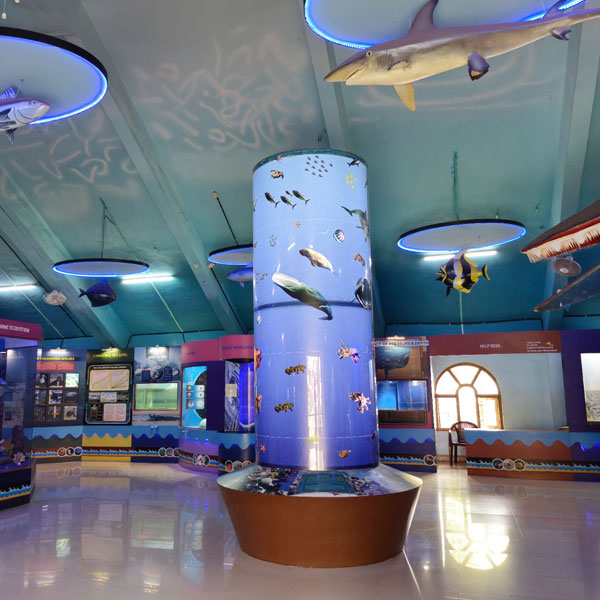
Visitors entering the 4800 square feet exhibition hall will welcome by the huge blue whale with its graceful body gestures. By the side of the whale, a cylindrical, section of the ocean depth stands erect towering above all the exhibits in the gallery. It comprises a variety of bizarre creatures at different levels of the zone.
The gallery also seeks to explain the rise and fall of the tides, the significance of Estuaries in maintaining ecological balance, phenomenon of El-Nino &La-Nino, Beaufort scale the measure of wind speed, methods of harnessing power from ocean, navigation instruments and so on. With a surfeit of working models as well as still models ,replicas of sea creatures, marine artefacts, information kiosks, and digital installations the gallery presents a cosy and inviting ambiance.
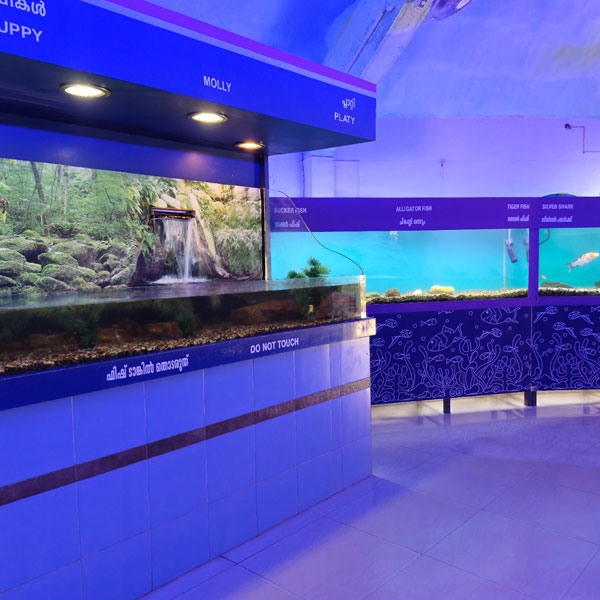
Aqua Life Corner: A Window into the Underwater World The Regional Science Centre and Planetarium, Calicut, has unveiled its newly renovated ‘Aqua Life Corner’, an engaging and educational aquarium that offers visitors a closer look at the fascinating world of aquatic life. This vibrant space is home to a diverse collection of freshwater fish species, each with unique characteristics and ecological significance.
Visitors can observe a variety of fish, including the colorful Platy, elegant Angel Fish, striking Tiger Fish, and the fascinating Arowana Fish, alongside species like the Oscar Fish, Parrot Fish, Black Moor, and the legendary Piranha. The aquarium also houses exotic species such as the Kupoko Kiocarp, Black Shark, and Aligator Fish, providing an insight into the rich biodiversity of freshwater ecosystems. Beyond being a visual delight, the Aqua Life Corner serves as a learning hub where visitors can understand the adaptations, behaviors, and survival strategies of these species. It offers a glimpse into aquatic ecosystems, food chains, and conservation challenges, emphasizing the importance of protecting marine and freshwater habitats. The aquarium nurtures curiosity, making it an ideal spot for students, researchers, and nature enthusiasts to explore the wonders of underwater life. A visit to the Aqua Life Corner is not just about observing fish—it is about developing a deeper appreciation for aquatic biodiversity and the delicate balance of life within water ecosystems.
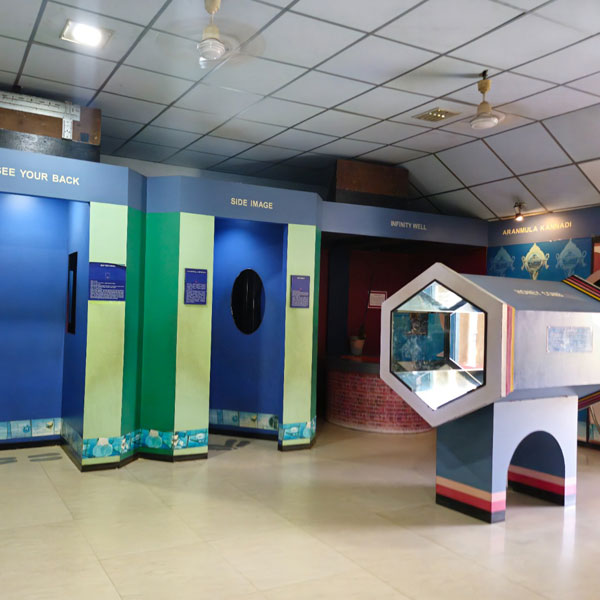
The Mirror Magic gallery provides opportunity for exploring all such manifestations and experiencing them. Visitors can walk through a maze created with mirrors as well as dine with several images of their own in this gallery. They can also have fun by looking at their distorted images at Fun mirrors as well as learn the science behind why concave mirrors shorter. In the gallery you can have several experiences like floating in air, vanishing image, tunnel of infinite depth.
The Mirror magic gallery is full of interest stimulating experiences through interactive exhibits and also explains scientific principles involved in mirror optics.
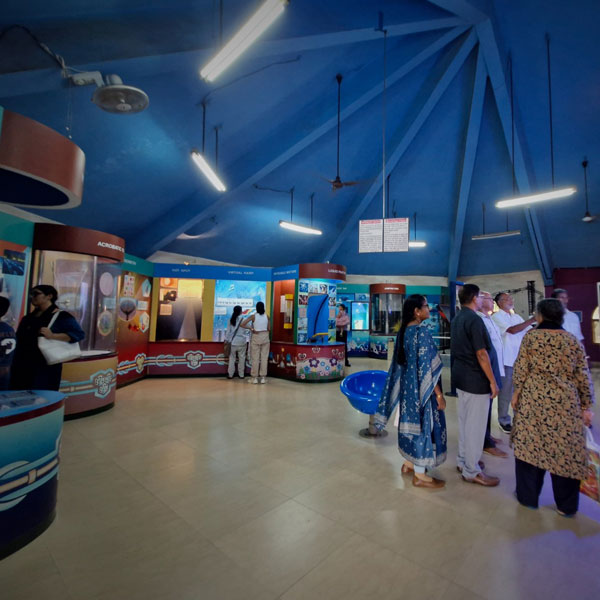
Fun Science gallery takes another approach. Roll a ball here, spin a wheel there and many magical effects happen which asks for explanations. A whole world of wonder and amazement awaits the visitors here with many interactive hands-on exhibits.
The motto of this gallery to encourage one and all being curious. Visit the Fun science gallery for getting the answers. This gallery describes the fundamental principles of physics in simple way. How ball floats in air defying gravity, Formation of eddy currents, lazy channel etc. are well explained in the gallery.
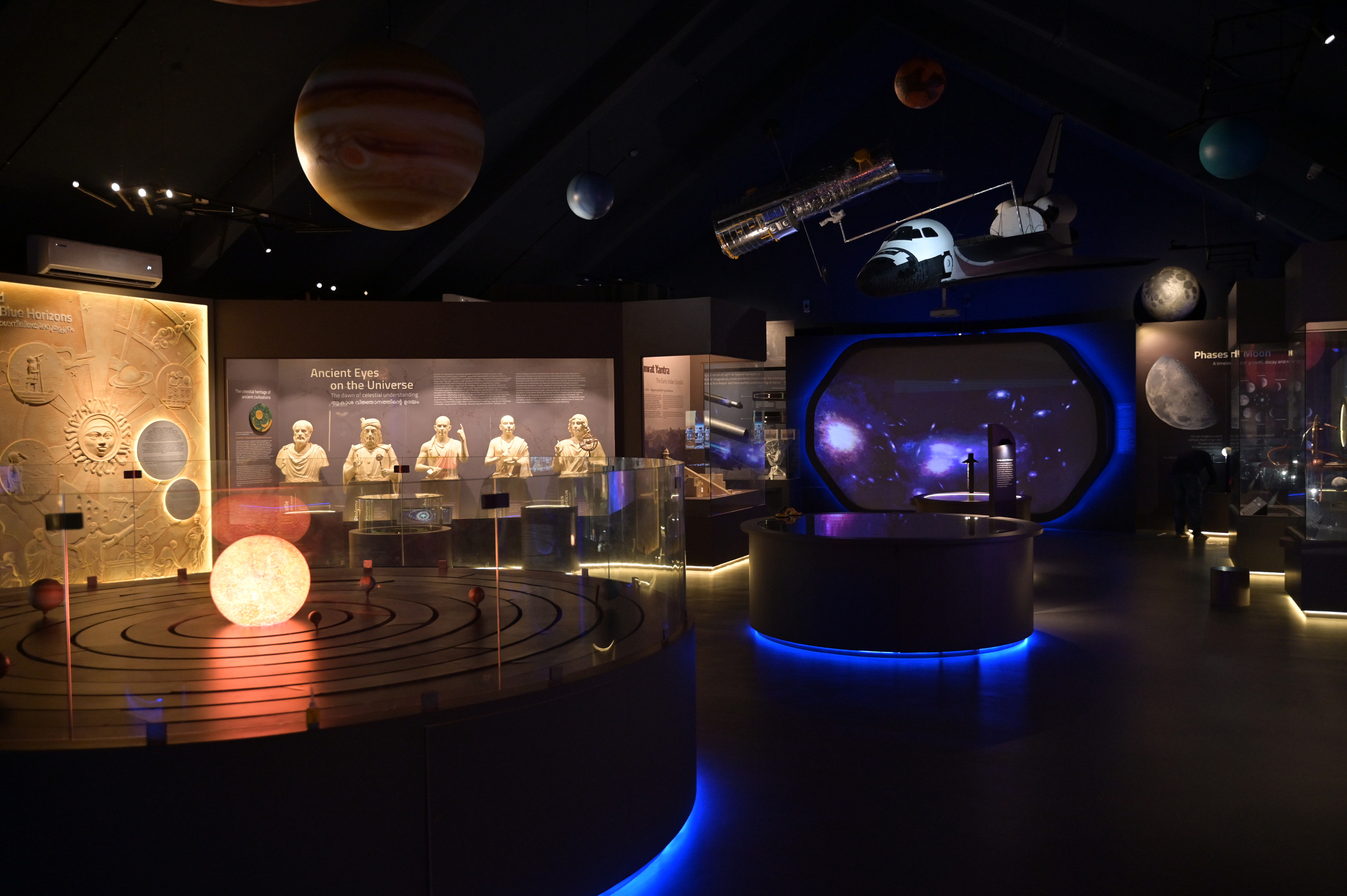
The gallery ‘Astronomy – unveiling the universe’ - an interactive space that takes visitors on an immersive journey from ancient sky-watchers to cutting-edge space telescopes at Regional Science Centre and Planetarium Calicut. The gallery begins by revisiting the contributions of ancient astronomers such as Aristotle, Ptolemy, Aryabhata, Bhaskara, and Copernicus. This is followed by a light-animated model of the Samrat Yantra. A life-size statue of Galileo Galilei observing the heavens through his telescope is an attraction. Interactive exhibits demonstrate the Moon's phases, Kepler’s laws of planetary motion, transits, occultations, and eclipses. A large-format video wall brings to life the story of the Big Bang. The Solar System zone showcases the planets. An interactive exhibit allows visitors to know their weight in different planets. Further sections delve into the constellations, asteroids, and the minor planets. Exhibit ‘Cosmic Explorer’, visitors can explore how different parts of the electromagnetic spectrum. The Cyclorama zone immerses visitors in a vivid astronomical landscape. Topics such as Exoplanets, Astrobiology, and the Kepler satellite’s contributions broaden our understanding of the possibility of life beyond Earth. Einstein’s spacetime curvature is exhibited through multi-touch interactive kiosk. Scaled models of the Hubble Space Telescope, its famous repair mission, and the James Webb Space Telescope are also present.